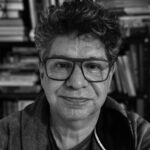An architect graduated from the Faculty of Architecture and Urbanism of the Federal University of Rio de Janeiro (UFRJ, 1985), with a specialization in Art and Architecture History from the Pontifical Catholic University of Rio de Janeiro (PUC-Rio, 2003), and a master’s degree in History – focusing on Social History of Culture – also from the Pontifical Catholic University of Rio de Janeiro (PUC-Rio, 2006). He obtained his Ph.D. in History from the Pontifical Catholic University of Rio de Janeiro, with his thesis developed in the field of Art and Architecture History (PUC-Rio, 2011). He is a professor at the Department of Architecture and Urbanism at PUC-Rio. He is also a professor at the Foundation for Technical School Support (FAETEC), where he teaches subjects related to architectural project representation. His area of expertise includes History and Theory of Architecture, with an emphasis on the Brazilian modernity period, and architectural representation.

